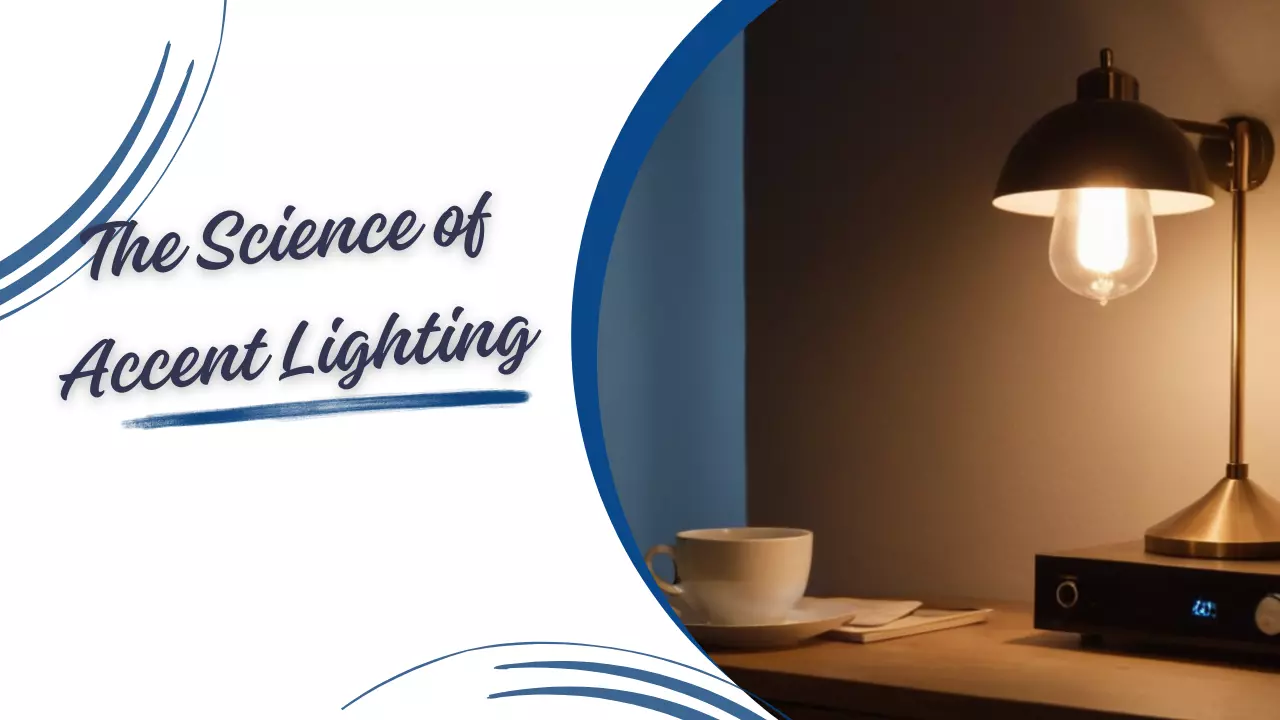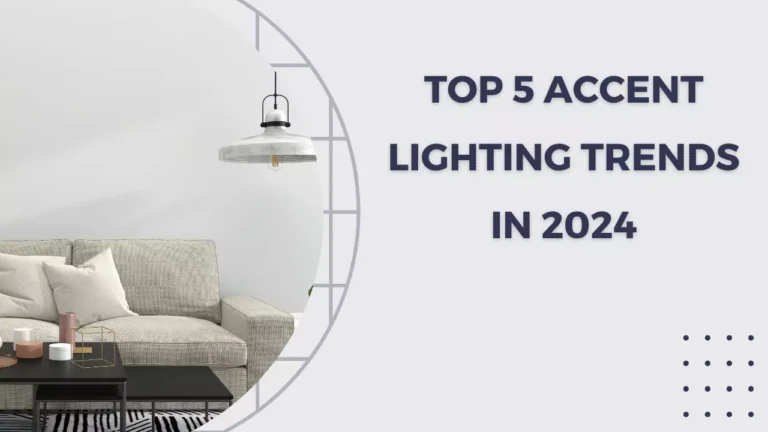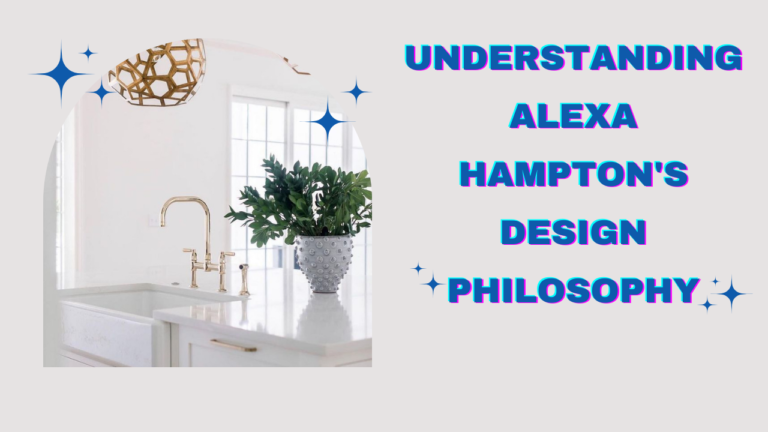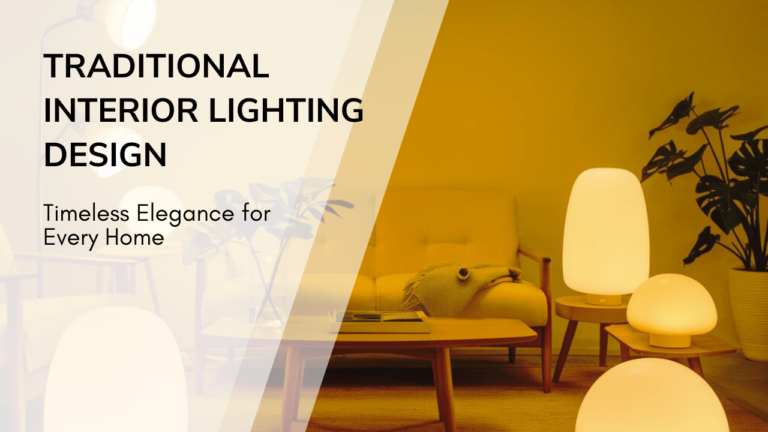The Science of Accent Lighting: How to Create the Perfect Ambiance in Your Home
Accent lighting is a powerful tool in interior design, transforming your living spaces by creating mood and emphasizing architectural features. It adds depth, highlights textures, and sets the overall ambiance of your home. This article explores the science of accent lighting and provides practical tips for achieving the perfect ambiance.
Understanding Accent Lighting and Its Effects
Accent lighting refers to the use of focused light sources to highlight specific areas or objects in a room. Unlike general lighting, which provides overall illumination, accent lighting is designed to create visual interest and enhance architectural features.
Types of Accent Lighting
Accent lighting comes in various forms, each with unique effects.
- Recessed Lights: Installed into the ceiling, recessed lights provide a subtle and unobtrusive way to highlight artwork or architectural features. They blend seamlessly with the ceiling, creating a clean look.
- Track Lighting: This versatile lighting system allows you to direct light to specific areas or objects. Adjustable fixtures enable you to change the focus as needed.
- Wall Sconces: Mounted on walls, sconces add a decorative element while providing focused light. They are ideal for highlighting artwork or adding a soft glow to a room.
The Role of Accent Lighting in Creating Ambiance
Accent lighting plays a crucial role in setting the mood of a room. By strategically placing lights, you can influence how a space feels and how its features are perceived.
- Highlighting Features: Accent lighting draws attention to architectural details, artwork, or plants. This creates focal points and adds visual interest.
- Creating Atmosphere: Soft, warm lights can create a cozy, intimate atmosphere, while cool, bright lights can make a space feel more vibrant and energetic.
Choosing the Right Accent Lighting for Your Space
Selecting the appropriate accent lighting depends on the specific needs of your space. Consider the following factors:
Purpose of the Room
The function of the room influences the type of accent lighting you choose. For example, a living room may benefit from soft, ambient lighting, while a kitchen or home office may require more focused lighting.
- Living Rooms: Use dimmable lights and multiple sources to create a relaxing atmosphere. Consider wall sconces or recessed lighting to highlight artwork or architectural features.
- Kitchens: Focused lighting is essential for tasks like cooking. Track lighting or under-cabinet lights can provide both functional illumination and visual interest.
Room Size and Layout
The size and layout of the room will impact the effectiveness of accent lighting. In smaller rooms, use compact, focused lights to avoid overwhelming the space. In larger rooms, you may need multiple light sources to achieve the desired effect.
- Small Rooms: Opt for fixtures that provide concentrated light without taking up too much space. Wall-mounted sconces or recessed lights are ideal.
- Large Rooms: Use a combination of track lighting, recessed lights, and floor lamps to create layers of light and highlight different areas of the room.
Choosing Light Fixtures and Bulbs
The type of fixture and bulb you choose will affect the quality and intensity of the light. Consider the following options:
- LED Bulbs: Energy-efficient and long-lasting, LED bulbs are available in various colors and intensities. They are a popular choice for accent lighting due to their versatility.
- Halogen Bulbs: These bulbs provide a bright, crisp light that enhances colors and textures. They are often used in track lighting systems.
Techniques for Effective Accent Lighting
To maximize the impact of accent lighting, use the following techniques:
Layering Light
Layering involves combining different types of lighting to create depth and dimension. This approach ensures that accent lighting enhances the overall ambiance of the room.
- Ambient Lighting: Provides overall illumination and sets the base level of light in the room.
- Task Lighting: Focuses on specific areas where activities take place, such as reading or cooking.
- Accent Lighting: Adds visual interest and highlights specific features or objects.
Highlighting Architectural Features
Accent lighting is particularly effective at emphasizing architectural elements, such as:
- Crown Molding: Install LED strip lights along the top of the walls to create a glowing effect that highlights the molding.
- Fireplaces: Use wall-mounted sconces or recessed lights to draw attention to the fireplace and create a focal point in the room.
Creating Dramatic Effects
For a more dramatic effect, consider using accent lighting to create contrasts and shadows:
- Backlighting: Place lights behind objects or structures to create a silhouette effect. This technique is effective for highlighting sculptures or plants.
- Up-lighting and Down-lighting: Direct light upwards or downwards to create interesting patterns and textures on walls and ceilings.
Maintaining and Adjusting Accent Lighting
Regular maintenance and adjustments are essential to keep your accent lighting effective and visually appealing.
Cleaning and Replacing Bulbs
Dust and dirt can accumulate on light fixtures and bulbs, reducing their effectiveness. Regularly clean fixtures and replace bulbs as needed to maintain optimal lighting conditions.
- Dusting Fixtures: Use a soft cloth or duster to remove dust from light fixtures and lampshades.
- Replacing Bulbs: Ensure that you replace bulbs with the same type and wattage to maintain consistent lighting.
Adjusting Light Placement
Over time, you may need to adjust the placement or intensity of your accent lighting to suit changes in the room or your preferences.
- Moving Fixtures: If the focus of the room changes, reposition fixtures to highlight new features or objects.
- Adjusting Intensity: Use dimmers or adjustable fixtures to change the intensity of the light based on the desired effect.
Conclusion
Accent lighting is a key element in creating the perfect ambiance in your home. By understanding its effects, choosing the right fixtures, and applying effective techniques, you can transform your living spaces into visually stunning and inviting environments. Remember to maintain and adjust your lighting to ensure it continues to meet your needs and enhance the beauty of your home.







